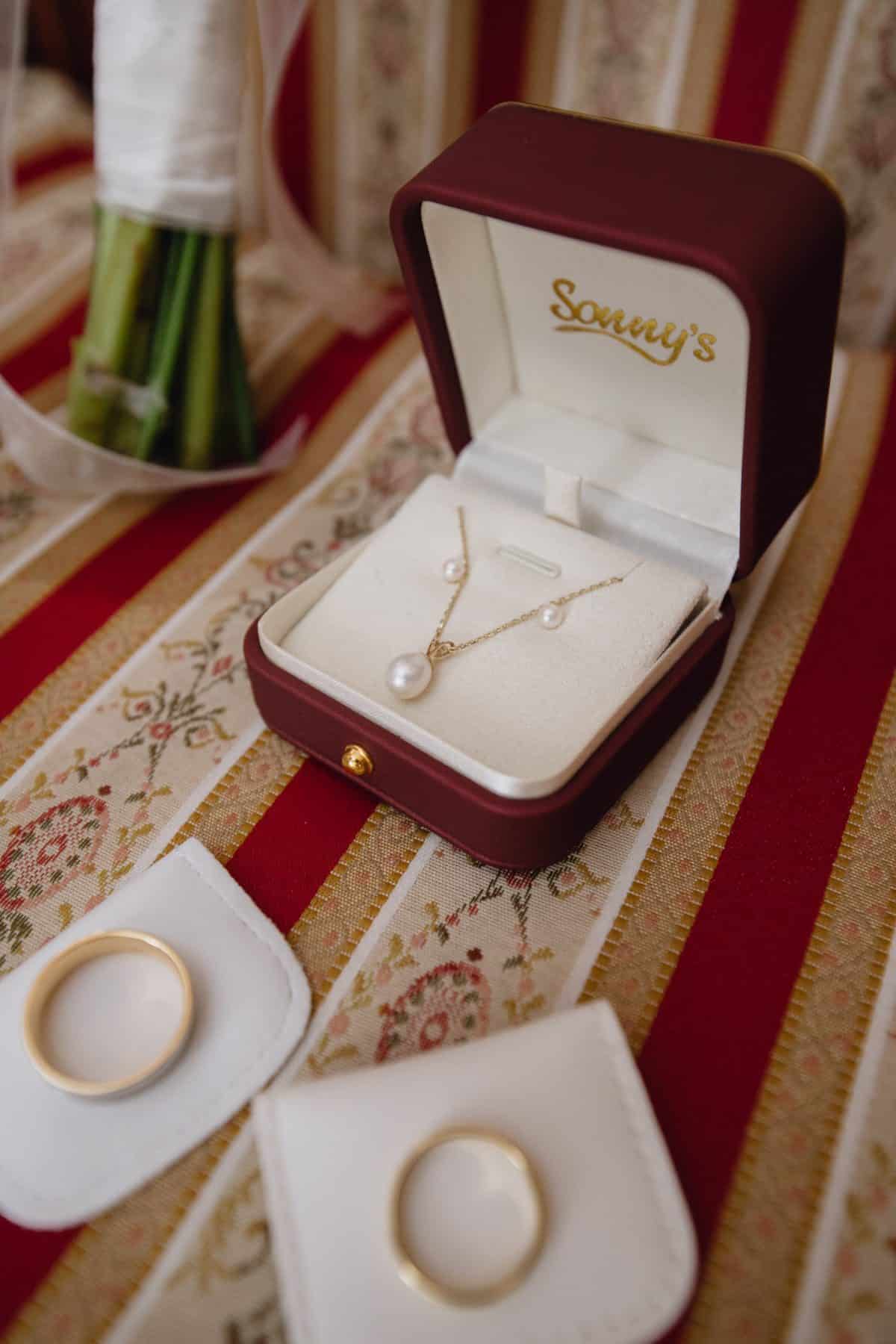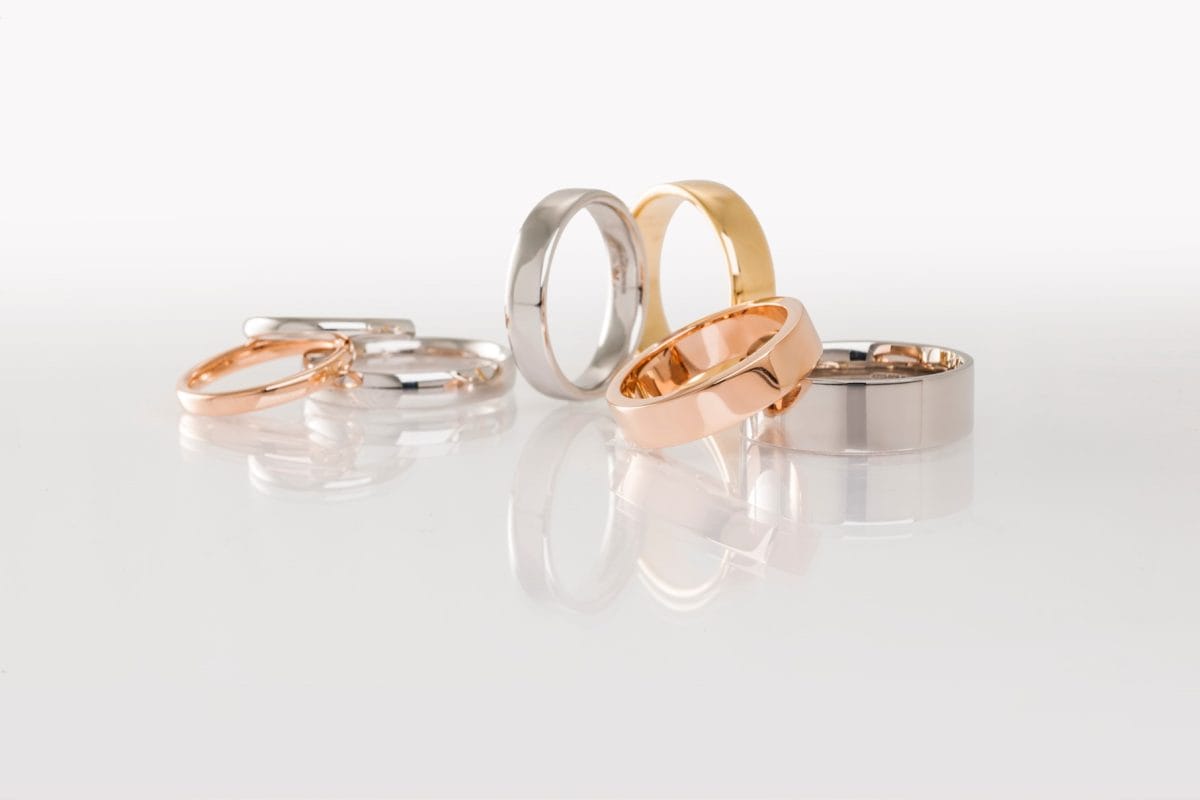Wedding Ring Shopping Guide
Reading Time: 4 minutes
This brief introduction is taken from our Jewellery Quarter Wedding Guide.
A wedding ring should be an individual as you are, and the Jewellery Quarter is full of designers,
makers and retailers who can help you both find the perfect wedding rings.

Metal Choice
The most important thing when considering the right metal choice, is simply personal preference. Many rings are also made from two metals which can look beautiful.
Platinum
Platinum is the most durable option for a ring. It has a naturally white colour which means it won’t fade like other pieces can. Thanks to its strength, weight and colour, it is the metal most likely to stand the test of time. Due to its array of qualities, it also has the highest value of the metals listed.
White Gold
This metal is the most popular choice for wedding rings. Due to its striking white colour, it is one of the best choices for allowing diamonds to stand out.
Yellow Gold
This metal is a very traditional choice and is perfect for someone looking for an elegant, classic ring that will never go out of style.
Rose Gold
This option has become much more popular in recent years, making it a modern choice popular for those with a unique style.
Titanium
Titanium is an affordable and hypoallergenic metal and rings won’t crack under pressure as it is very durable. However, titanium rings can’t be resized and are dull compared to platinum.

Width and Weight
The width of ring you choose is also personal preference. A thicker ring might suit your style or be more practical if you have concerns about wear and tear. Ring widths vary between very narrow (2mm) and very wide (8mm). There are lightweight, mediumweight and heavyweight ring options available, depending on the thickness of the band.
Shape
The main decision is whether to have a plain band or one which is shaped.
Some shapes such as wishbone and ribbon shaped rings are very popular. You may also have a bespoke ring shape created to perfectly match an engagement ring. Diamond set and patterned wedding bands are also very popular.

The profile of wedding bands come in a number of different shapes, these are some of the most common.
There are also many other options such as as D shaped, flat, bevelled and convex rings. We recommend trying them on to see what suits you and feels comfortable.
Traditional court
This ring profile is rounded on both the exterior and interior. This is a classic and timeless shape for
wedding bands.
Soft court
A soft court is rounded but this shape is less pronounced on the exterior, whilst still being nicely rounded on the inside for comfort.
Flat court
A flat ring profile on the exterior of the ring, but still rounded on the inside next to your finger.
Making it your own
Many couples now choose to add diamonds or other favourite gemstones to their rings, and there are different options for settings which can be delicate or durable depending on your needs.
You can also personalise your ring with different finishes – most wedding bands have a traditional bright finish but sandblasted and hammered finishes are popular too.
Engraving names and wedding dates inside the ring is also a beautiful personal touch.
A very personal ring can be created by choosing a fully bespoke service or even by remaking an existing piece of jewellery such as a family heirloom into a new wedding band.
Diamonds
When it comes to purchasing your diamonds, always remember the 4 Cs:
Colour
An evaluation of the absence of colour. The highest colour grade is D which is the whitest. Z has the most colour presence.
Cut
The cut grade refers to the way the chosen diamond interacts with light. The more accurate the cut, the brighter the diamond will appear.
Clarity
A test for clarity identifies any blemishes within the stone. This is tested under a magnification
loupe as some are too small for the human eye to see! The more blemishes, the lower the quality.
Carat
This is a measurement of weight and not perceived size. Although the larger the carat, the larger the diamond generally is.
Stone Shape
Different shapes which diamonds and other stones are cut into have names.
Knowing some of the more popular ones will be helpful for choosing a stone you like.


